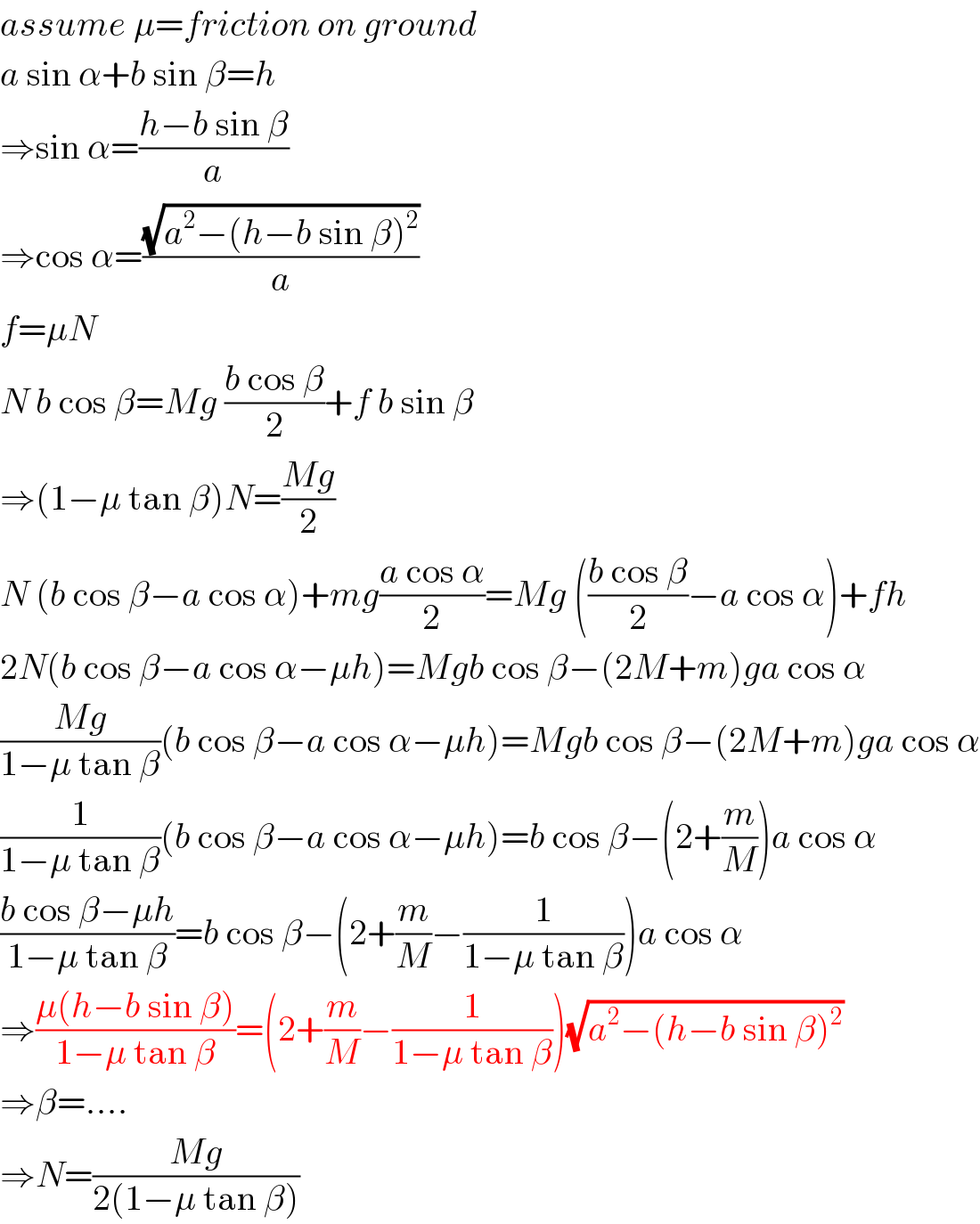
Question and Answers Forum
Question Number 53684 by ajfour last updated on 25/Jan/19

Commented by ajfour last updated on 25/Jan/19

Commented by mr W last updated on 25/Jan/19

Commented by mr W last updated on 25/Jan/19

Commented by ajfour last updated on 25/Jan/19

Answered by mr W last updated on 25/Jan/19

Commented by mr W last updated on 25/Jan/19

Commented by ajfour last updated on 25/Jan/19

